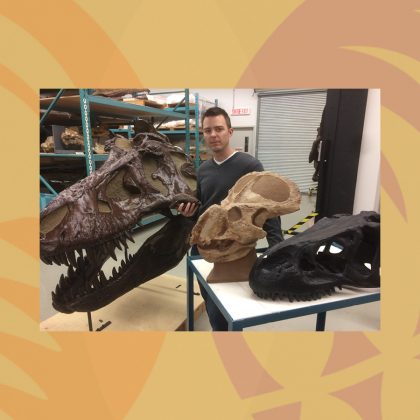Smiles That Change Everything: How Facial Emotions Shift Attractiveness Perceptions of Masculinity
In support of Mariana Carrito and colleague’s article, When he smiles: Attractiveness preferences for male faces expressing emotions.
Facial attractiveness has long been a subject of curiosity and study, with scientists attempting to unravel the complex factors that influence our perception of beauty. One particular area of interest is the impact of sexual dimorphism on facial attractiveness. Sexual dimorphism refers to the physical differences between males and females of the same species. These differences, especially in relation to facial features, have been known to play a role in attractiveness preferences.
However, conflicting results, especially in female preference studies, have puzzled researchers. Some studies suggest that females prefer more masculine male faces (e.g., Johnston, 2001), while others find feminized male faces more appealing (e.g., Carrito et al., 2018; Perrett et al., 1998).
Several explanations have been proposed for these inconsistent findings, including environmental and economic factors (e.g., DeBruine et al., 2010) and the association between facial masculinity and perceived dominance (e.g., Puts et al., 2010). Another plausible explanation for this variation in attractiveness preferences is the role of emotional expression.
Masculine facial traits bear a resemblance to the expression of anger (Becker et al., 2007), and even androgynous faces displaying anger are often identified as male (Hess et al., 2009), suggesting an overlap in perception between facial masculinity and anger. This association between anger and masculinity could signal a red flag in mating contexts, leading to avoidance rather than attraction.
So, can differences in sexually dimorphic facial features influence the perception of emotional states? Can facial expressions affect how masculinity is perceived in male faces? For instance, would showing male faces expressing happiness to heterosexual women result in different masculinity preferences compared to showing neutral or angry male faces?
Our study, When he smiles: Attractiveness preferences for male faces expressing emotions, aimed to explore the bidirectional influence of emotional expressions and facial masculinity on women’s preferences for male faces. One notable finding was the confirmation of the effect of facial sexual dimorphism on the perception of emotional cues, particularly happiness and anger. Masculinized faces were perceived as angrier, while feminized faces were perceived as happier. This aligns with previous research that has linked sexually dimorphic facial features, particularly masculine ones, to the perception of anger (Becker, 2017).
The study also delved into the impact of emotional expressions on women’s perception of masculinity in male faces. It was discovered that angry faces were perceived as more masculine compared to happy faces. This finding suggests that emotions expressed on the face can influence our perception of masculinity.
However, the most intriguing finding of the study was uncovered when we discovered that women prefer reduced feminization in happy faces compared to neutral or angry faces. This preference for decreased feminization may reflect a lowered effort to mitigate the negative associations linked with the subtle or overt expression of anger, such as perceived hostility. While further research will be needed to delve into the relationship between anger, dominance, and preferences for masculine facial features, differences in mouth curvature and apparent resting expressions may contribute to the variations observed in studies investigating attraction to masculinity.
These discoveries hold significance because they underscore that a changeable trait, namely emotional expression, has the potential to influence attractiveness perceptions of masculinity. Demonstrating that women’s preferences regarding sexual dimorphism alter when a face displays a smile, complicates our understanding of the role of sexual dimorphism in mate choice, making it a more nuanced and multifaceted concept.
This research paves the way for further inquiries into the fascinating world of human perceptions and attractions, reminding us of the ever-evolving nature of our understanding of beauty.
Mariana is a Postdoctoral Researcher who is currently working as a member of the Human Sexuality group from CPUP (Centre for Psychology at University of Porto). She is the supervisor of the “Human Evolution and Sexuality” research line and the lab coordinator/manager of the Porto Sexlab. As an experimental psychologist, Mariana is most interested in studying how people perceive different social signals from faces and other body cues, and the evolutionary meaning of such processing.
Works cited
Carrito, M. L., Bem-Haja, P., Silva, C. F. D., Perrett, D. I., & Santos, I. M. (2018). Event-related potentials modulated by the perception of sexual dimorphism: The influence of attractiveness and sex of faces. Biological Psychology, 137, 1-11. https://doi.org/10.1016/j.biopsycho.2018.06.002
Becker, D. V. (2017). Facial gender interferes with decisions about facial expressions of anger and happiness. Journal of Experimental Psychology: General, 146(4), 457– 463. https://doi.org/10.1037/xge0000279
Becker, D. V., Kenrick, D. T., Neuberg, S. L., Blackwell, K. C., & Smith, D. M. (2007). The confounded nature of angry men and happy women. Journal of Personality and Social Psychology, 92(2), 179–190. https://doi.org/10.1037/0022-3514.92.2.179
DeBruine, L. M., Jones, B. C., Crawford, J. R., Welling, L. L. M., & Little, A. C. (2010). The health of a nation predicts their mate preferences: Cross-cultural variation in women’s preferences for masculinized male faces. Proceedings of the Royal Society of London B: Biological Sciences, 277(1692), 2405-2410. https://doi.org/10.1098/rspb.2009.2184
Hess, U., Adams, J. R. B., Grammer, K., & Kleck, R. E. (2009). Face gender and emotion expression: Are angry women more like men? Journal of Vision, 9(12), 19. https://doi.org/10.1167/9.12.19
Johnston, V. S., Hagel, R., Franklin, M., Fink, B., & Grammer, K. (2001). Male facial attractiveness: Evidence for hormone-mediated adaptive design. Evolution and human behavior, 22(4), 251-267. http://dx.doi.org/10.1016/S1090-5138(01)00066-6
Perrett, D. I., Lee, K. J., Penton-Voak, I., Rowland, D., Yoshikawa, S., Burt, D. M., Henzi, S. P., Castles, D. L., & Akamatsu, S. (1998). Effects of sexual dimorphism on facial attractiveness. Nature, 394, 884–887. https://doi.org/10.1038/29772
Puts, D. A. (2010). Beauty and the beast: Mechanisms of sexual selection in humans. Evolution and Human Behavior, 31(3), 157–175. https://doi.org/10.1016/j.






